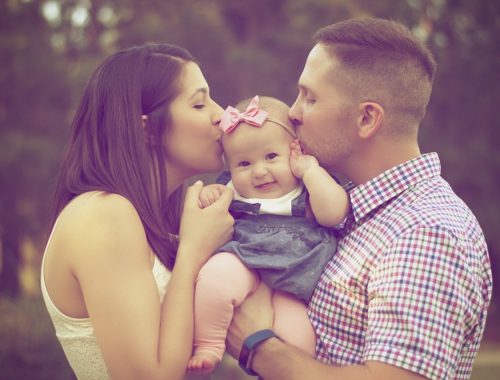It has been proven that both parents and infants benefit from using sign language. Benefits include improved communication, trust building, strengthening parent/child bond, promotion of positive emotional development, bolstering babies’ self confidence, helping babies learn to talk and jumpstarting intellectual development.
When To Start Sign Language With Your Baby
A good time to start using sign language is when you notice that your baby is starting to point to things, bringing toys to you and looking for a response, starting to wave bye-bye, showing an interest in picture books and seems frustrated that they can’t communicate with you.
Which Signs To Try With Your Baby
The Baby Signs Program promotes choosing signs:
– that match your child’s interests – children are more likely to learn signs for things they like and want to communicate about;
– for objects, actions and describing words – babies love to sign about objects like their toys, animals and food. They also enjoy signs about things they love to do like play, eat and love, and being able to use descriptive words such as hot, cold, big and little;
– for words your baby can’t say yet – a main goal of teaching signs is to help children communicate when they don’t have a way to express themselves with words;
– for words your child doesn’t say clearly – sometimes babies use the same sound pattern to mean many things; if your child has a sign to use along with the word, his message will be much clearer;
– that can help in dangerous situations – hot, hurt or help can be valuable signs for babies in distressing situations;
– that can prevent frustration – using signs like more, all done and sleep can help give babies a stronger sense of control during mealtime and bedtime routines;
– for frequently-used words – the more you use a sign, the easier it will be for your baby to learn it.
How Can I Help My Baby Retain Sign Language?
Baby signs are 90% based on American Sign Language, and it is said that if your baby continues to sign up until they are over the age of three, the chances of them retaining ASL is very good.
Start with a few signs that you will use everyday, such as eat, more, drink and all done. Repetition is the key to success when it comes to signing. Always use the word and the sign together and make signing a fun part of your daily activities.





[…] babies are crying. Well, what’s the matter? Maybe your babies are too young to know the baby sign for hurt, so this is when you have to put on your deerstalker and figure out how to get them to […]
[…] provided by the Affiliated Services for Children and Youth, http://www.ascy.ca. We have a great article on teaching sign language as […]